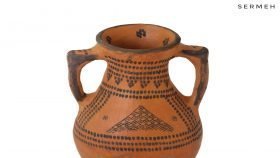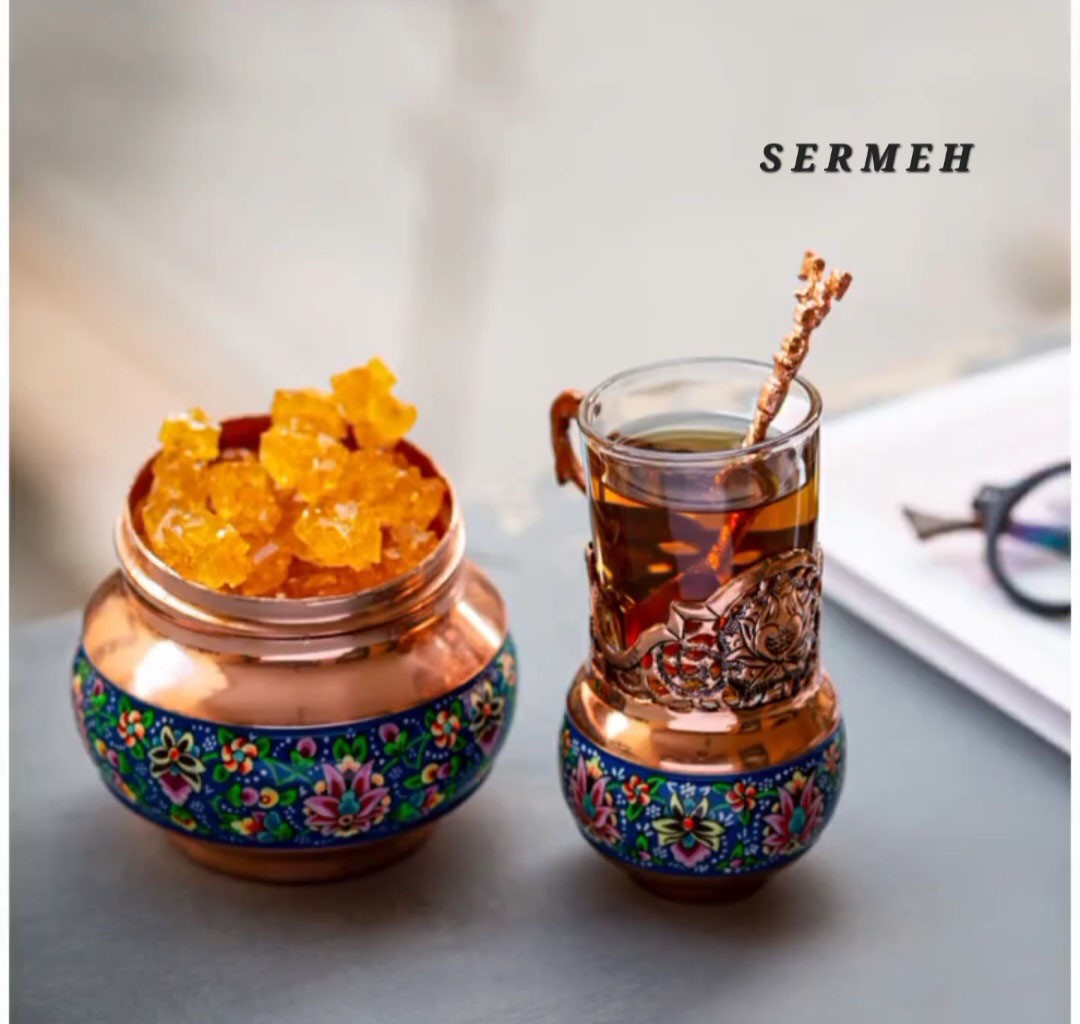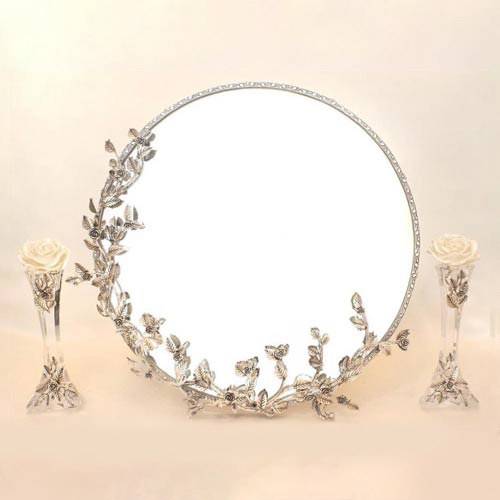POTTERY OF KALPOURGAN

*Buy online Persian pottery*
History of Kalpourgan Pottery
ancient Persian pottery: The pottery in the village of Kalpourgan in Saravan city of Sistan and Baluchistan is 5,000 years old. The women potters and girls of this village traditionally inherited this art from their ancestors; they create the kind of pottery that is both functional for the Baluch people and has given the village of Kalpourgan a particular identity of its own. The pottery of this region bears close resemblance to its primitive origins, especially to the pottery which dates back to the third millennium BC, excavated through drilling in various parts of Sistan and Baluchistan. Kalpourgan pottery artists link Iranian history with today’s pottery. In a book titled An Overview of Iranian Crafts, Jay Kellogg mentions the three oldest areas where pottery emerged: Northern Thailand, Sistan and Baluchistan, and Japan.
Technique and Method of Making Kalpourgan Pottery

Engraving on this pottery is done using a stone powder called Titok. The Kalpourgan potters obtain Titok from Mount Birak near the town of Zaboli. It is a kind of manganese stone and the color that comes out of it is brown. The way it works is by grinding the stone into slurry. They are then used for decorating the pottery.
Rural women potters still create pottery using the coiling (or locally called “couple”) technique, and without the need for glaze, they decorate the pottery using motifs inspired by thousands of years of beliefs. All pottery is then exposed to sunlight for ten days to dry. The clay pots are coloured with Titok before going into the oven, and then the dish and the paint are baked simultaneously. In Kalpourgan the stoves are quite rudimentary, they are open and use wood as fuel. The firewood is obtained from old trees and desert shrubs. Nowadays [some of] these furnaces have been upgraded and are using oil and are situated indoors.
The particular type of pottery produced in the village of Kalpourgan is significant in terms of shape and colour. The colour of the ceramics is light red; the higher the heat applied to the iron-containing ceramics, the brighter the colour will be. Kalpourgan pottery is usually vessels for everyday use including pitchers, food containers, pots, bowls, plates, statues, and toys. The thickness of this pottery ranges from half to one and a half centimetres, depending on the use and the size of the containers. Standing forms are more common in this type of pottery.
Motifs on Kalpourgan Pottery
Kalpourgan potters’ unique works’ are decorated using simple and geometric motifs inspired by their beliefs and Baluchistan nature. Features such as simple and practical forms, not using glaze, and using natural raw materials and elementary designs add to the potential of this pottery village in the southeast of the country, with significant implications. Visual elements such as rhythm, symmetry, repetition, equilibrium, and motion have a great influence on the formation of pottery motifs; they contribute to the structural coherence of the motifs and form them into harmony at some point and diffusion at some other.
The use of broken angular lines in the creation of motifs such as wheat and bullock clusters along with the curved and circular forms for motifs such as Teku Gilo, Kobel, Chottal, and Sarok adds to the beauty of the artwork. Most motifs are formed and transformed while moving on the surface of the pottery, creating new images, sometimes two motifs are combined to create a novel design. The inspiration for the motifs is the nature of Baluchistan, the plants, animals, and beliefs of the Baluch people. The use of the circular form in the designs of the Kalpourgan pottery can be attributed to the feminine spirit of the artists who created these images.
The forms of these vessels follow a structured and stable pattern, but the primitive techniques of production give a sense of individuality to each work, an individuality which is, at the same time, following a structural unity. The motifs decorating Kalpourgan pottery, along with the shape of the vessels and their function, are considered an important feature. The simple geometric, abstract, and cryptic expression of the motifs on these vessels depicts the simplicity of a primitive nature; these features have made Kalpourgan the living pottery museum of Iran pottery.
*Buy online Persian pottery*



























The history of the art of pottery in Iran goes back to ancient times. When agriculture came into existence and cultivation started on Iran’s plateau by me primitive races of this land, people made utensils of killed clay in order to meet their needs.
thanks for attention